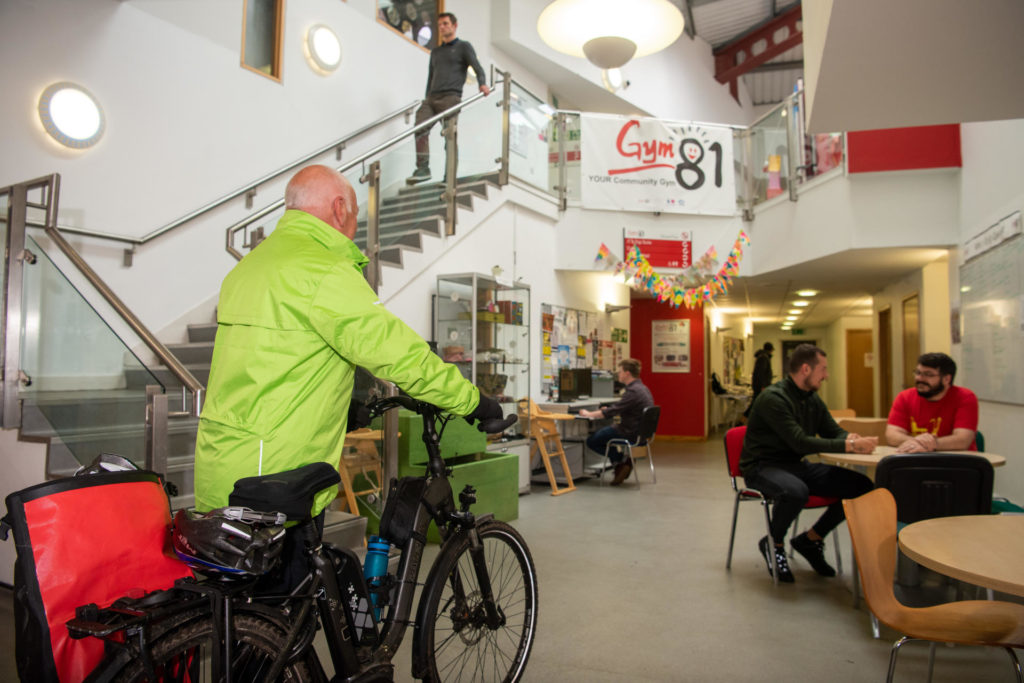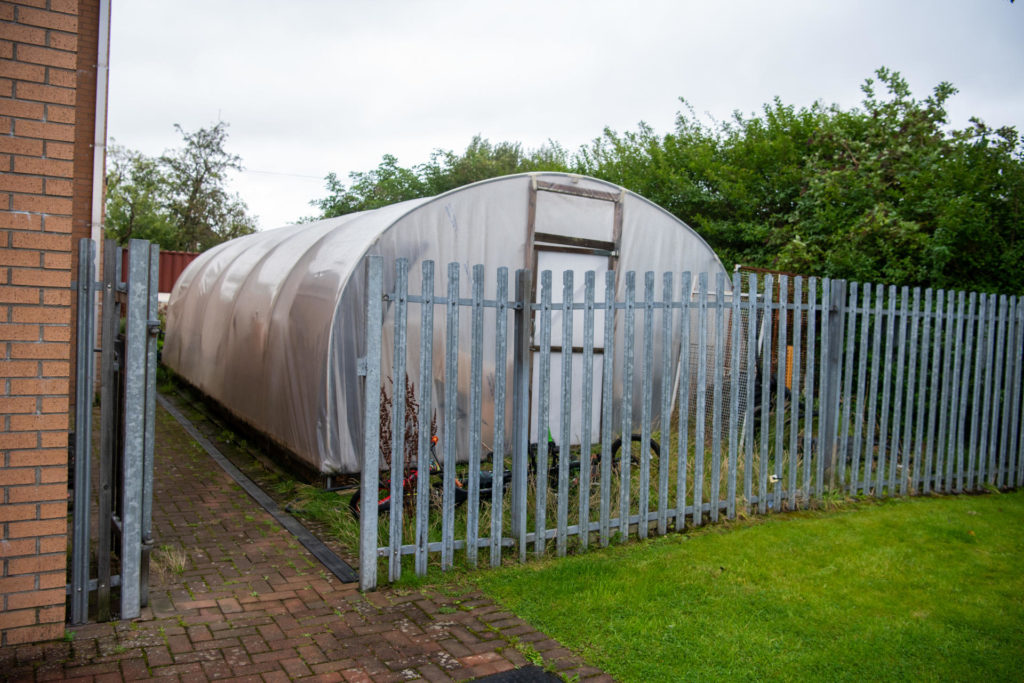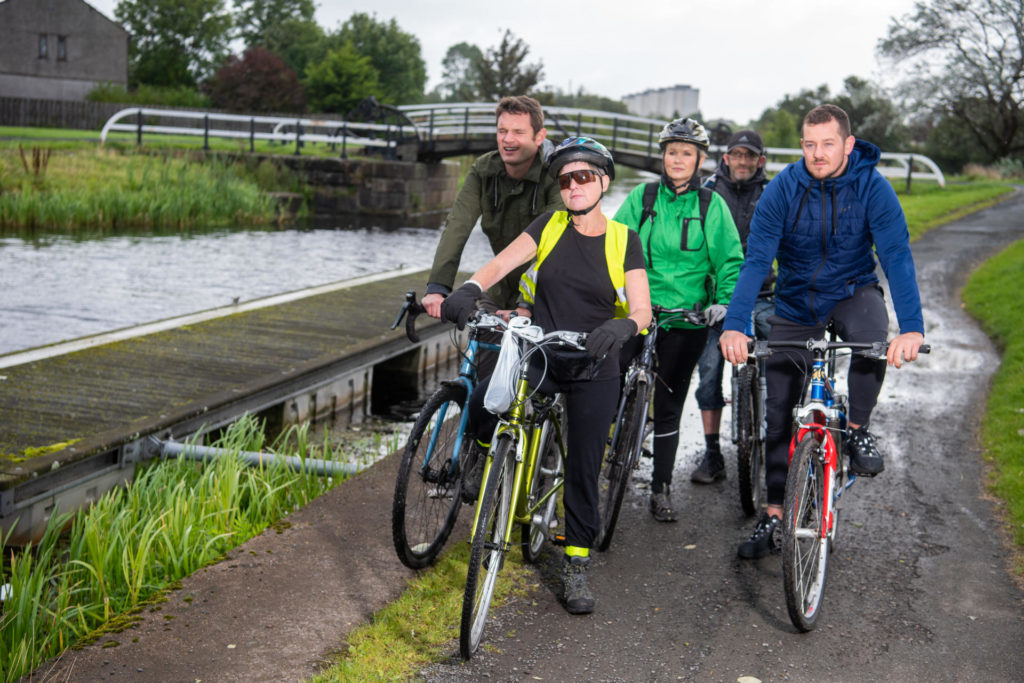
Inspired by residents’ reported barriers to walking and cycling, Clydebank Housing Association has been working to create a new accessible path between the Centre81 community centre and the Forth & Clyde Canal.
Working in partnership with Sustrans Scotland, Clydebank Housing Association (CHA) established a steering group with local residents to work out ways to encourage people to walk and cycle for more of their every-day trips.
Residents suggested that creating an accessible route from Centre81, to the nearby canal towpath – part of National Cycle Network Route 754 – would help more people access the canal as well as local shops, bus links and other neighbourhoods along the canal.
Using local contacts and knowledge
CHA took on the task of working with the community to identify how best to design this path.
CHA made full use of its existing connections with groups throughout Clydebank. ISARO Social Integration Network – which works to promote integration and understanding amongst communities – provided support for the consultation, along with local disability groups, youth clubs and schools.
The honest feedback about the issues that visitors to Center81 faced on their everyday journeys gave CHA clear understanding of their needs and how they could be addressed through construction of a new access route.
Resources for Behaviour Change
Funding from other sources can help spur interest in walking and cycling in the local area. A successful bid to Keep Scotland Beautiful’s Climate Challenge Fund saw CHA work to refurbish bikes for people in the local area and provide maintenance training so people could keep their bikes on the road.
Led rides and social cycles also began and finished at Centre81, taking advantage of the café and other facilities. The new ramp will give ride groups direct access to and from the canal, avoiding an alternative narrow path. This will give people new or returning to cycling a safe, off-road link to practice and ride freely on.
Designing links for everyone

Inspired by their work with local residents, CHA and their designers created six designs for the ramp. Feedback also came from local stakeholders, including planning and roads officers at West Dunbartonshire Council, representatives from Clydebank Community Council and community officers from Police Scotland. Work with Scottish Canals and Sustrans Scotland ensured that proposals fitted with the requirements around the canal and the National Cycle Network.
Ensuring that local residents and users of Centre81 remained involved, CHA presented the six designs to the community, who voted for their favourite. The successful project was put forward to Sustrans Scotland for Places for Everyone construction funding.
Sustrans awarded CHA £170,000 through the Places for Everyone programme to finalise the technical design of the ramp and carry out construction. The option choose by the community will include local history, artwork, colourful tarmac and lighting to create an interesting new place. The school are keen to contribute by creating content to make this new space reflect the history and culture of Clydebank.
Key Learning

This project shows how partnerships with other organisations can create additional capacity and make smaller projects easier to deliver.
CHA staff were confident in engaging with their community, but had no experience of delivering an infrastructure project. West Dunbartonshire Council did not have the capacity to work in-depth with the community to develop a proposal for the canal ramp.
By pooling their knowledge and expertise, the two organisations were able to work together to create a useful route which meets the needs of local people and encourages them to travel by foot and bike.